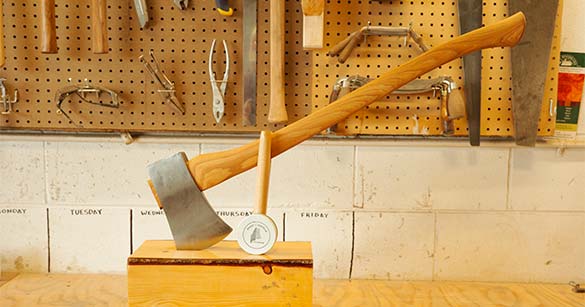Vintage axes possess a unique charm and craftsmanship that modern tools often lack. If you've stumbled upon a handcrafted axe hidden away in an old shed or inherited one from a family member, restoring it to its former glory can be a rewarding endeavor.
In our comprehensive guide, we'll walk you through each step of the axe restoration process, from selecting an axe worthy of revival to strapping on a leather sheath to protect your newly rejuvenated tool. With our expert guidance, you'll be ready to breathe new life into your vintage axe and preserve its heritage for generations to come.
Step 1: Pick an axe worthy of restoration
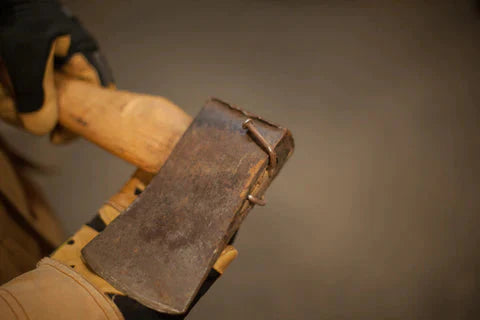
The vintage axes that Brant & Cochran chooses for restoration may be from different manufacturers and be different styles but they all have the same characteristics: (i) the bit is not chipped or cracked, (ii) it has not lost its original contour through over sharpening, (iii) the steel at the edge is an acceptable hardness, (iv) the eye of the axe is not cracked or deformed and the walls of the eye are uniform, (v) the poll of the axe is not severely mushroomed from misuse, and (vi) there is only surface rust or corrosion on the axe.
Step 2: Remove the axe handle
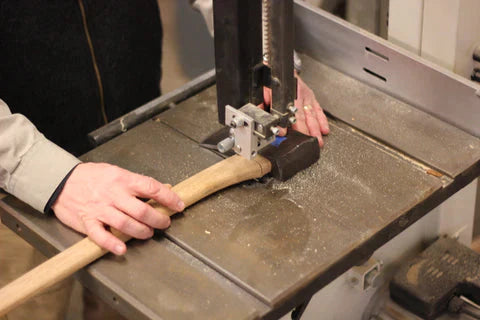
If the vintage axe came with an old handle it is removed. In rare instances, we keep the original handle in the axe, but it has to be in pristine condition. We remove the axe handle with our band saw. We then drill several holes into the end of the handle to loosen it. Finally, we put the axe into our handle jig and use a mallet and wood drift to punch the remaining handle part out of the eye of the axe.
Step 3: Remove rust from the axe
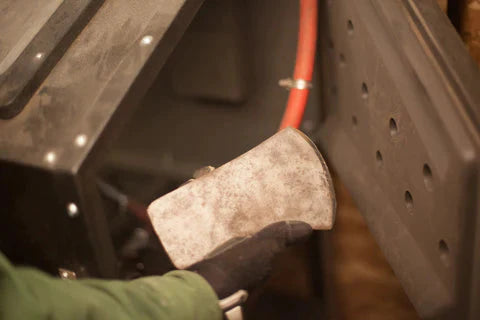
There are a number of ways to remove rust from old iron and steel tools. We use a sandblaster as this does not use caustic vinegar that needs to be disposed of and can acidify the surface. After the sandblasting process, we inspect the axe again to ensure the rust did not conceal any other cracks or imperfections in the axe.
Step 4: Clean the axe surface with our Bader BW III
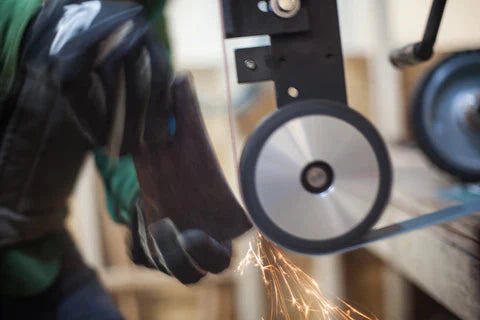
Once the axe comes out of the sandblaster we take it to our Bader BW III grinder to address any slight mushrooming of the poll. We may also smooth out the edges of the axe and shape the bit if needed. While nearing the cutting edge of the axe we are careful not to overheat the bit. We then add a patina to the axe blade to prevent any future corrosion.
Step 5: Handle the axe
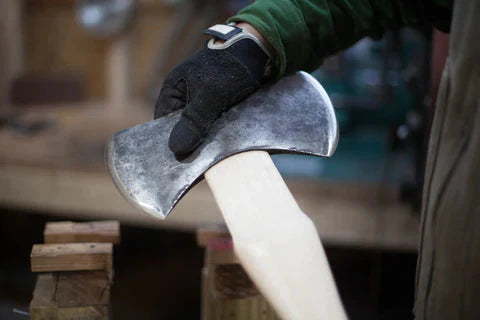
We pick a new American Hickory handle that is the appropriate length for the axe and form the end so it fits tightly into the eye of the axe. Once the handle fits snugly into the eye of the axe a wooden wedge is pounded down into the kerf cut at the end of the handle. (There are differing schools of thought on the need for adding a second metal wedge to the eye.) We then cut off any excess handle and wedge material from the end.
Step 6: Hone and strop the axe
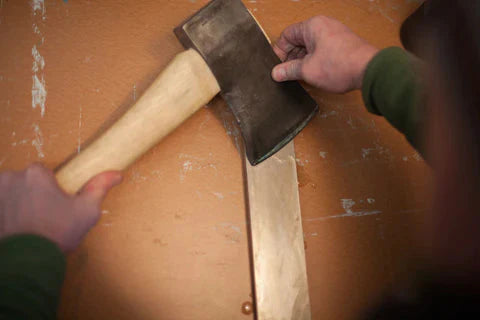
After handling the axe, we use a diamond hone to finish sharpen the axe. We know it is sharp enough when we can shave the hair off our forearms! Once the bit is sufficiently sharp we draw it against a leather strop.
Step 7: Oil the handle and bit
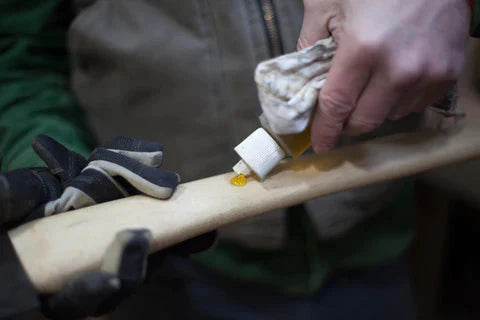
We apply a thin coat of camellia oil to the axe blade to inhibit rust and corrosion and a coating of boiled linseed oil to the handle.
Step 8: Strap on a leather sheath
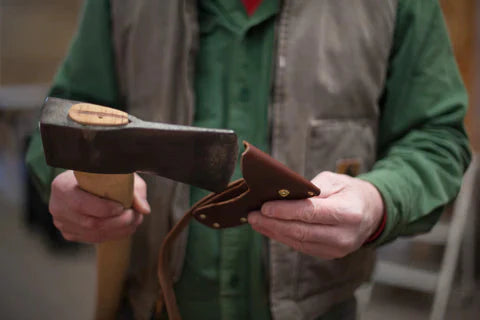
The final step is to snap a new, hand-made leather sheath to the axe blade to protect the axe (and the user!).
Restoring a vintage axe is not only a rewarding project but also a testament to the value of preserving craftsmanship and history. By following our 8-step process – from selecting an axe worth restoring to strapping on a protective leather sheath – your handcrafted tool has been revitalized and can now serve you for years to come. Your restored axe not only showcases your dedication and skill, but also honors the legacy of those who crafted it long ago.
Take pride in knowing that you've played a crucial role in keeping the spirit of traditional craftsmanship alive and well by restoring your axe with Brant & Cochran.
